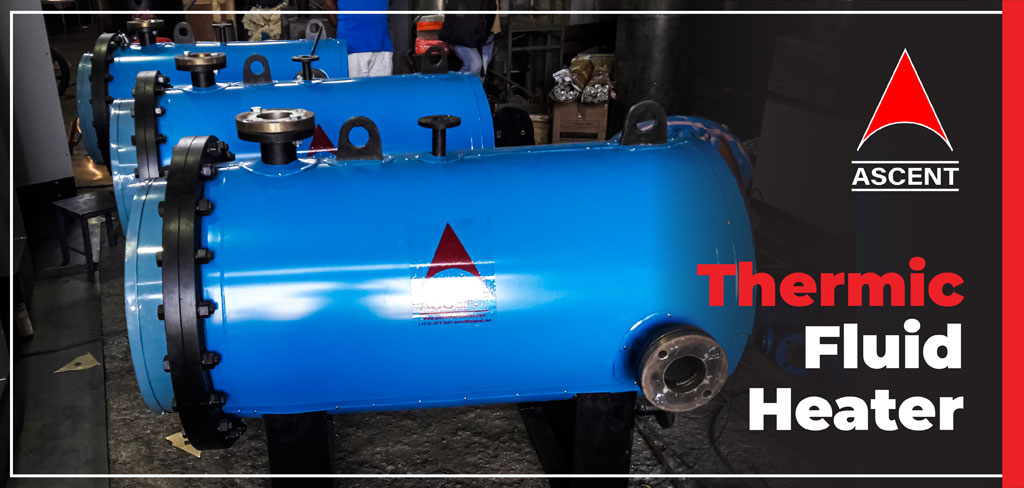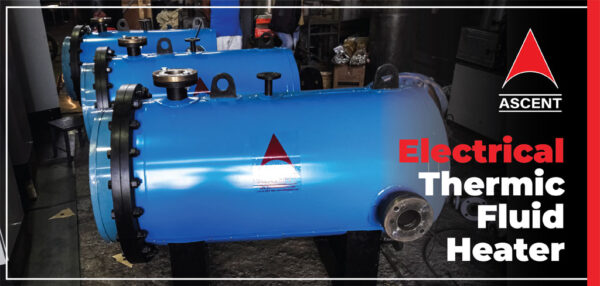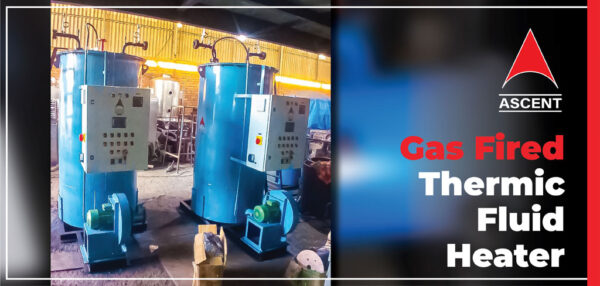Thermic Fluid Heater/ Hot Oil Systems
Table of Contents
Share
Quick Enquiry Form

Introduction to Thermic fluid heater / Hot Oil Systems
A thermic fluid heater is a type of industrial heating equipment that uses a thermal fluid as a heat transfer medium to transfer heat from a heat source to a process. The thermal fluid is typically a synthetic or mineral oil that is heated to a high temperature by a burner or other heat source, and then circulated through a closed-loop system to transfer heat to a variety of industrial processes, such as heat exchangers, reactors, and other equipment.
Thermic fluid heaters are used in a variety of industries, including chemical, petrochemical, food processing, and textile manufacturing, among others. They are often preferred over other heating equipment because Thermic heaters offer precise temperature control, high efficiency, and a safer operating environment. Fluid heaters can also be customized to meet the specific requirements of a particular process or application.
Thermic Fluid Heater Price
| Model | ST – 05 |
| Heat Output-kcal/h | 50,000 |
| Max. Temp. −°C | 300°C |
| ∆ T°C | 40°C |
| Flow – m3/h | 3·0 |
| Head – mІc | 50 – 55 |
| Thermal Efficiency % | 88±2% |
| Fuel (Light Oil) kg/h | 6 |
| Fuel (heavy Oil) kg/h | N/A |
| Connected Load – Kw | |
| Light Oil | 3 |
| Heavy Oil | N/A |
| Thermic Fluid Content in the Coils – litres | 20 |
| Expansion Tank capacity (Litres) | 100 |
| Inlet/Outlet Size – mm | 25 |
| Dry weight of Heater – kg | |
| Light Oil | 750 |
| Heavy Oil | N/A |
| Overall Dimensions – mm | |
| Height | 1600 |
| Length | 1200 |
| Width | 700 |
| Price | |
Thermic Fluid Heater Working Principle
The thermic fluid heater working involves the circulation of a thermal fluid through a closed-loop system to transfer heat to a process. The thermal fluid is heated in a fired heater, which typically uses a burner or other heat source to generate heat. The thermal fluid is then circulated through a network of pipes or tubes to transfer heat to a variety of industrial processes.
The detailed thermic fluid heater process includes the thermal fluid, which is typically a synthetic or mineral oil, has a high boiling point and a low vapour pressure, which makes it an ideal heat transfer medium. As the fluid circulates through the system, it transfers heat to the equipment or process it is designed to heat, such as heat exchangers or reactors. The temperature of the thermal fluid is carefully controlled using a temperature controller, which ensures that the fluid remains within a specified temperature range.
The heated fluid then returns to the fired heater to be reheated, and the process repeats itself. This closed-loop system ensures that the thermal fluid is constantly recirculated and reheated, which maximizes energy efficiency and provides precise temperature control for the industrial process. The efficiency and accuracy of the thermic fluid heater make it a popular choice in a wide range of industrial applications.
Thermic Fluid Heater Design & Construction
Thermic fluid heater design involves a comprehensive approach to ensure that the equipment meets the specific requirements of the industrial process it is intended to heat. The design process typically includes the following key steps:
- Heat transfer calculation: The design team will first perform a heat transfer calculation to determine the amount of heat required to heat the process. This calculation takes into account factors such as the process flow rate, temperature range, and the specific heat of the material being heated.
- Fluid selection: The next step is to select the appropriate thermal fluid based on the process requirements. Factors such as the maximum operating temperature, fluid viscosity, and heat transfer coefficient are taken into consideration when selecting the fluid.
- System layout: Once the heat transfer calculation and fluid selection are complete, the design team will create a system layout that includes all of the necessary components such as the heater, pumps, piping, valves, and controls. The layout must ensure that the system can safely and efficiently transfer heat to the process.
- Heater sizing: The size of the heater is determined based on the amount of heat required for the process and the properties of the thermal fluid. The heater must be sized to ensure that it can heat the fluid to the desired temperature and maintain that temperature throughout the system.
- Component selection: The design team selects the components such as pumps, valves, and controls that are compatible with the thermal fluid and can operate effectively in the specific process conditions.
- Safety considerations: Safety is a critical aspect of thermic fluid heater design. The design team must ensure that the equipment is designed to prevent hazards such as leaks, fires, and explosions. Safety features such as pressure relief valves, temperature sensors, and flame sensors are incorporated into the design to ensure safe and reliable operation.
Overall, thermic heater design requires a detailed understanding of the heat transfer process, fluid dynamics, and safety considerations to ensure that the equipment meets the specific requirements of the industrial process. The design process is carried out by experienced professionals to ensure that the equipment operates safely, efficiently, and reliably.
Applications of Thermic fluid heater
Thermic fluid heaters have an extensive range of applications in various industries. Some of the common applications of thermic fluid heaters include:
- Chemical industry: Thermic heaters are used to heat various chemical processes, such as reaction vessels, distillation columns, and heat exchangers. They provide precise and uniform temperature control, which is essential for many chemical processes.
- Petrochemical industry: In the petrochemical industry, fluid heaters are used to heat oil and gas processing equipment, such as crude oil distillation units, catalytic cracking units, and reformers.
- Food processing industry: Thermic fluid heaters are used to heat food processing equipment, such as fryers, ovens, and steam kettles. They offer precise temperature control and uniform heating, which is essential for food safety and quality.
- Textile industry: Thermic fluid heating systems are used to heat dyeing machines, stenters, and other textile processing equipment. They offer precise temperature control and uniform heating, which is essential for producing high-quality textiles.
- Pharmaceutical industry: In the pharmaceutical industry, thermic fluid heaters are used to heat various processes, such as reactors, distillation columns, and dryers.
- Plywood industry: Thermic fluid heaters are used to heat the plywood hot presses, which are used for bonding the layers of veneer together.






